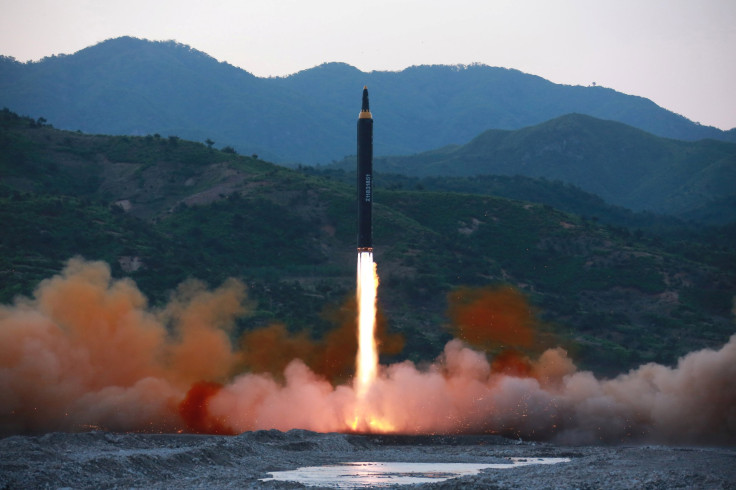North Korea Missile To Strike US? Pyongyang Says New Ballistic Missile Capable Of Carrying Nuclear Warhead

North Korea claimed Monday it successfully test-fired a new mid-to-long-range ballistic missile, capable of carrying a large nuclear warhead. Kim Jong Un's regime also stated the new type of rocket could hit the the U.S. mainland.
The missile, called the Hwasong-12, launched at a steep angle from a site northwest of Pyongyang, reached an altitude of 1,242 miles and traveled about 435 miles, landing in the Sea of Japan. North Korea's leader observed the launch of the rocket, according to the Korean Central News Agency (KCNA).
"The test-fire aimed at verifying the tactical and technological specifications of the newly developed ballistic rocket capable of carrying a large-size heavy nuclear warhead," the KCNA report stated. The report also stated America's mainland and operations in the Pacific region are in North Korea's "sighting range for a strike and that it has all-powerful means for a retaliatory strike."
Read: North Korea Missile Test Could Derail New South Korean President's Peace Effort
Kim had told the scientists and technicians involved "not to be complacent" but to build further "nuclear weapons and methods of delivery" until the U.S. made "the right choice," KCNA said in its report.
South Korea's military said it could not yet verify the North's claims, but Pyongyang seems to have yet to master missile technology for "atmospheric reentry," a key element in developing an intercontinental ballistic missile (ICBM).
"The missile may have a maximum range capable of reaching Alaska and Hawaii if it is fired at a standard angle," Kim Dong-yub, a professor at the Institute for Far Eastern Studies in Kyungnam University, said according to Yonhap News.
The U.N. Security Council will be holding private consultations Tuesday afternoon regarding North Korea’s recent missile testing. Tensions heightened in the Korean Peninsula in recent weeks amid speculation Pyongyang may conduct its sixth nuclear test sometime soon while the North's leader continued to threaten neighboring South and the U.S. with its series of missile tests, some of which had recently failed.
North Korea claims its nuclear advancements are in retaliation to U.S.-South Korea military drills, which Pyongyang says are a threat to its security. On Monday, South Korea's unification ministry warned North Korea to not miscalculate the situation.
"(The international community) has the shared view that North Korea's nuclear and missile provocations pose a grave threat to peace and security in the region and beyond the peninsula," Lee Duk-haeng, ministry spokesman, told a regular press briefing.
Last month, the U.S. warned it would unleash a pre-emptive strike against North Korea if it felt a significant nuclear threat was imminent. North Korea retaliated by saying it would “hit the U.S. first” if the U.S. planned a strike.
“By relentlessly bringing in a number of strategic nuclear assets to the Korean peninsula, the U.S. is gravely threatening the peace and safety and driving the situation to the brink of a nuclear war,” North Korean officials said at the time, according to the state news agency KCNA. “This has created a dangerous situation in which thermo-nuclear war may break out at any moment.”
© Copyright IBTimes 2024. All rights reserved.











